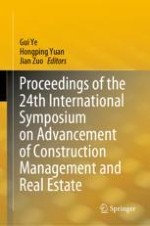2021 | OriginalPaper | Buchkapitel
Quantifying the Carbon Footprint of Newly-Constructed Buildings by Using Life Cycle Assessment: A Case Study of Shenzhen City, China
verfasst von : Jingjing Geng, Huabo Duan, Yuanyuan Huang, Qian Liu
Erschienen in: Proceedings of the 24th International Symposium on Advancement of Construction Management and Real Estate
Verlag: Springer Singapore
Aktivieren Sie unsere intelligente Suche, um passende Fachinhalte oder Patente zu finden.
Wählen Sie Textabschnitte aus um mit Künstlicher Intelligenz passenden Patente zu finden. powered by
Markieren Sie Textabschnitte, um KI-gestützt weitere passende Inhalte zu finden. powered by
